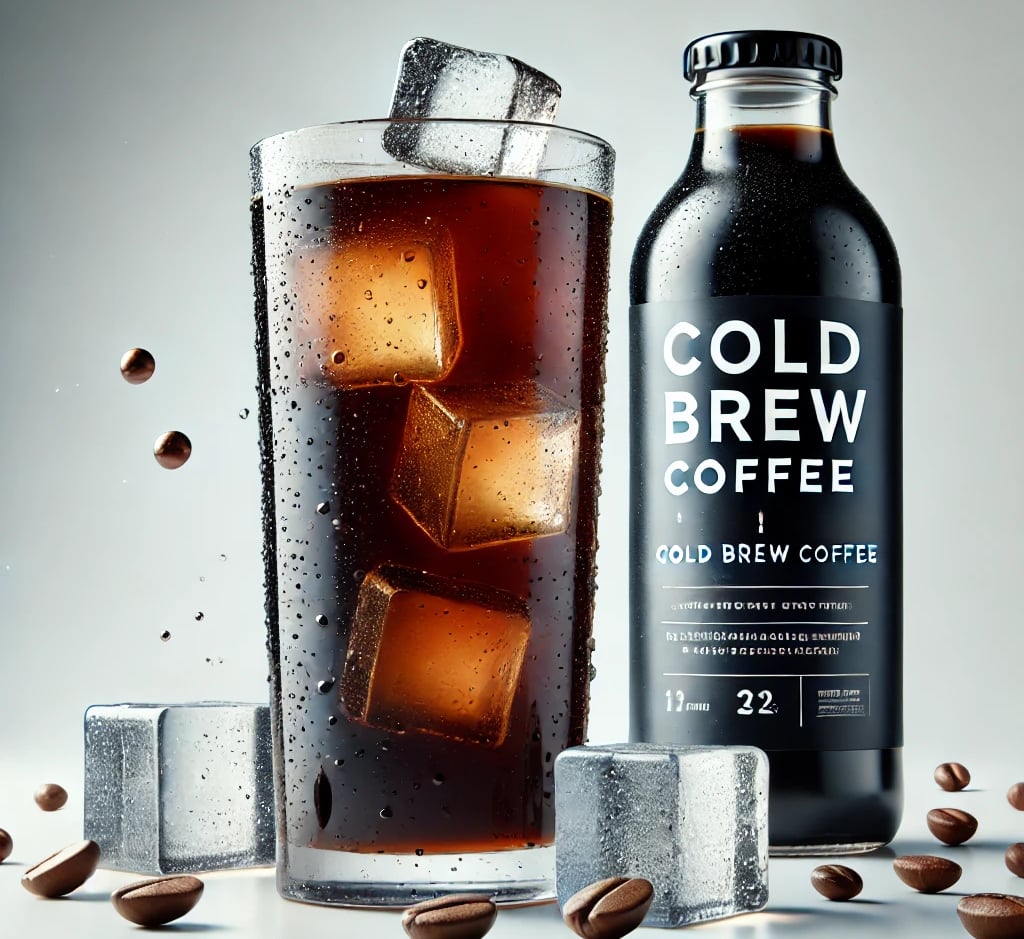COLD BREW COFFEE
What makes cold brew coffee taste special?
12/12/20244 min read


What is the difference between cold brew coffee and iced coffee?
All iced coffee lovers should know that not all iced coffees are created equal. No, cold brew and iced coffee are not the same. But what sets them apart?
But when it comes to these two coffee drinks, there is a difference in the brewing method. Iced coffee is just regular coffee – from a drip coffee maker, chilled and served over ice.
Unlike iced coffee, cold brew coffee is made without any hot water. The cold brew method requires the coarse coffee grounds to be steeped in cold water for at least 12 hours, after which the grounds are filtered and the coffee concentrate is concentrated for drinking.
What makes cold brew coffee taste special?
The absence of heat during the brewing process gives cold brew coffee its unique flavor and characteristics. However, cold brew is more expensive than traditional hot brewed coffee because it requires twice as much ground coffee.
Flavors in cold brew tend to be lost because the acids and other solubles in coffee are only created when the beans are exposed to higher temperatures. That makes cold brew easier on the stomach, although the flavor may be bland for some with strong palates.
How does the method of making cold brew affect flavor?
The method you use for cold brew will affect the flavor of your coffee.
- Immersion involves steeping ground coffee in cold water for up to 24 hours before filtering.
- Slow drip involves slowly dripping ice water and collecting the coffee grounds below. This method is faster than immersion, although it still takes up to 5 hours to brew a cup of cold brew.
When it comes to flavor, steeping produces a fuller, more concentrated drink than the diluted, medium-bodied brews produced by slow drip. This is the preferred method for most homebrewers, as you can use a variety of blends.
Blend or Single Origin Coffee?
If you’re new to cold brew, your safest bet is probably single-origin coffees. These tend to have a more pronounced flavor profile than blends, so you’ll enjoy the full range of flavors from each one better.
Single-origin coffees tend to be more expensive than blends, but in our experience, the extra investment will yield a significantly better tasting coffee. That said, if you have a blend you know and love, it’s worth a try.
How do you adjust the flavor of cold brew?
Maybe you used the wrong ratio of coffee and water, and instead of getting a strong coffee-flavored drink, you ended up with a weak brew. Very unsatisfying! Don’t worry, we’ve got some tips to help you fix it:
- Leave it longer
If your first batch of cold brew lacked all the rich flavors you were hoping for, try leaving your next batch in the fridge for longer – up to an hour. But if you leave it too long and the end result is still not as strong as you’d like, you’ll need to try something else.
- Add a little water
If you’ve been cold brewing your coffee all day in the fridge and it’s still producing a lackluster cup of coffee, it’s likely that the ratio of coffee grounds to water is off. A weak cup of coffee usually means too much water has been added.
If you find this is the case, remember to add a small amount of water. After your calibrated cold brew has been in the fridge for 12 to 24 hours, taste the coffee and see if any of your favorite beans’ flavors come through in your cold brew cup.
Regarding Caffeine… How Does Cold Brew Compare to Espresso?
Contrary to popular belief, a single shot of espresso is actually not the most caffeinated coffee drink on the market today. That is, unless you consume about 16 times the recommended serving size!
A standard espresso, for one shot, contains an average of 60 milligrams of caffeine. A cold brew that’s several times the size of an espresso can contain up to about 200 milligrams of caffeine. That makes cold brew coffee more caffeinated by serving size, not by volume.
Which Coffee Roast Makes the Best Cold Brew Coffee?
The answer is that you can use a light, medium, or dark roast to make a cup of cold brew coffee.
However, when you’re pulling out your cold brew coffee, we recommend using a medium or dark roast to get the job done. Medium roasts tend to have a fuller, more flavorful flavor profile without the bitterness of a dark roast.
Does grind size matter?
Yes, it definitely does!
So whether you’re buying pre-ground beans for cold brew or pulling out your trusty coffee grinder and a bag of whole beans, know that the grind is important.
If you grind too fine, the finished coffee will taste bitter and harsh due to over-extraction. Therefore, your grind should be coarse for cold brew. Additionally, if you’re using the slow drip cold brew method, a coarse grind will allow for a faster flow, while a fine grind that’s too dense will restrict the flow of water
Summary:
Cold brew coffee is a refreshing summer drink, but you need to brew it properly, so here are some tips to keep in mind when brewing:
- Use light roast coffee, avoid adding citrus or other herbal blends.
- When brewing dark roast beans, brew for a shorter time so as not to lose the sweet flavor in your cup of coffee.
- Use whiskey stones or frozen cold brew coffee to chill your drink, instead of ice cubes which will dilute your coffee.
